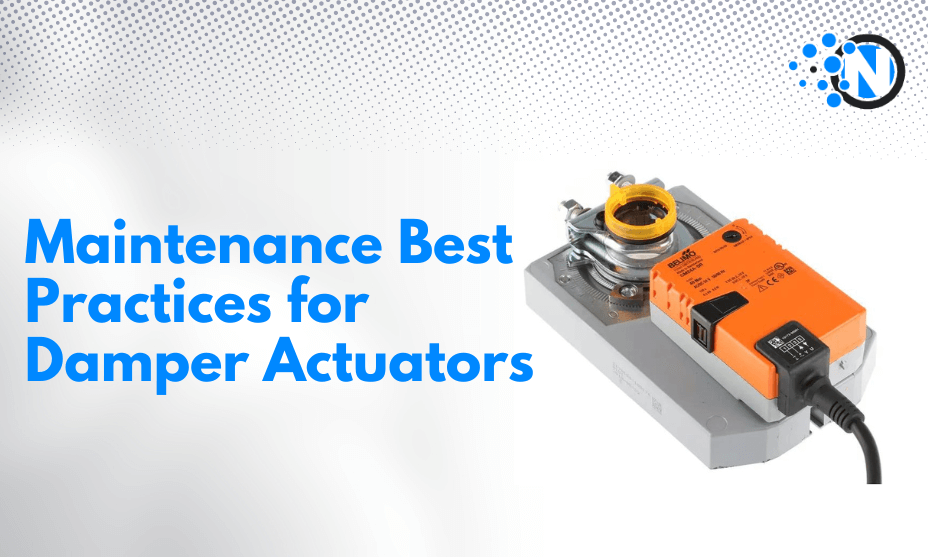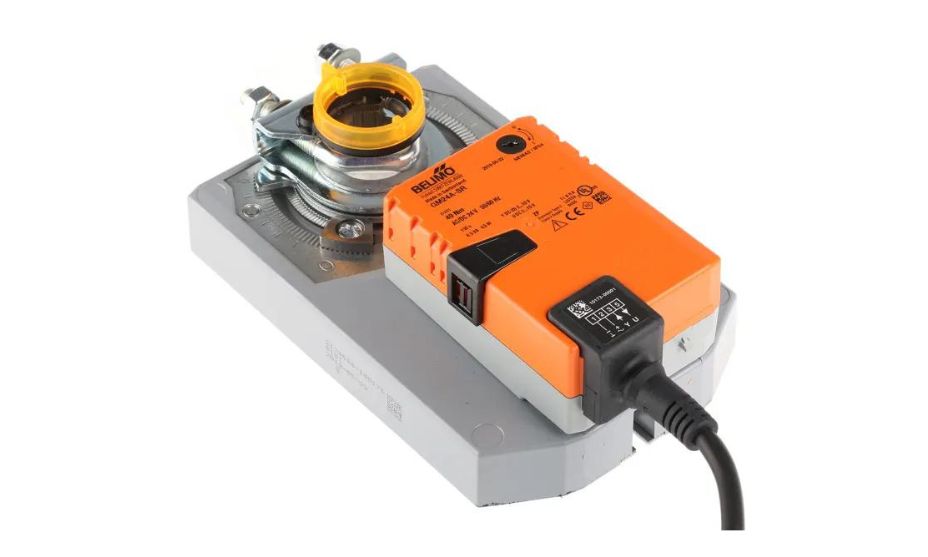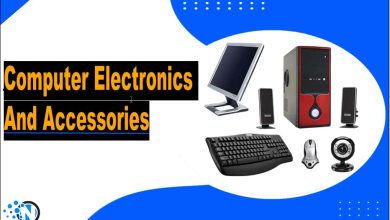Maintenance Best Practices for Damper Actuators: Ensuring Longevity and Performance

Damper actuators are crucial components in HVAC systems, responsible for controlling airflow and maintaining optimal environmental conditions. To ensure their longevity and optimal performance, regular maintenance is essential. In this article, we will discuss the importance of maintenance for damper actuators and provide best practices to ensure their longevity and performance. Furthermore, we will discuss maintenance considerations for industry-leading damper actuator manufacturers, such as Honeywell and Johnson Controls.
Understanding Damper Actuators
Damper actuators are devices that move dampers to control how much air flows through ducts in heating, ventilation, and air conditioning (HVAC) systems. By carefully adjusting damper positions, the actuators regulate the amount of air that enters or exits a space. This allows precise control over ventilation, temperature, and air quality in that space.
There are a few different types of damper actuators, including electric, pneumatic (using air pressure), and spring return models. Each has its own advantages. Electric actuators can be controlled remotely and offer very precise positioning. Pneumatic ones are simple and durable. Spring return actuators use a spring mechanism to return dampers to a preset position in case of power loss.
The Importance of Maintenance for Damper Actuators
When it comes to those damper actuators that help control airflow in HVAC systems, don’t underestimate the power of regular maintenance. Giving your actuators some TLC on a consistent basis will keep them working their best for longer. How does proper maintenance help exactly?
First, it lets the actuators enjoy a nice, long lifespan before retirement. Second, well-cared-for actuators help the whole system work reliably and efficiently. No unexpected breakdowns or inefficiencies for you! Third, catching issues early prevents pricier repairs or total replacements down the road. Ouch, goodbye budget. And fourth, properly maintained actuators perform better at adjusting airflow as needed.

Maintenance Best Practices for Damper Actuators
Taking good care of your damper actuators is important to keep them working their best. Here are some tips:
- Give them a regular check-up. Look over the actuators to spot any damage, wear, and tear, or anything else unusual. While you’re at it, wipe off any dirt, dust, or gunk that may have built up. This keeps things running smoothly and prevents problems.
- Lube them up. Moving parts need lubrication to avoid too much friction. Be sure to use the right kind of lubricant recommended by the manufacturer. The wrong stuff could actually hurt the actuators.
- Recalibrate every so often. This realigns the actuators so they respond correctly to controls and maintain the right airflow and temperature. It makes up for any natural shifts over time. You may also need to tweak settings based on changes in the environment and system needs.
- Test and verify. Run the actuators through their paces regularly to confirm everything is working as it should. Catch any potential issues before they become real problems.
- Fix problems fast. If inspections turn up any issues, don’t wait to address them. Something like a worn-out part is a ticking time bomb. Replace it pronto to avoid bigger headaches down the road.
The key is staying on top of maintenance and not letting little things go too long. With some care and attention, your damper actuators will provide reliable service for years to come.
Read Also: Solar Panels 101: A Business’s Guide to Installation and Maintenance
Case Studies: Maintenance Practices for Honeywell and Johnson Controls Damper Actuators:
When it comes to maintaining damper actuators from Honeywell and Johnson Controls, there are some best practices to follow.
For Honeywell damper actuators, be sure to follow the manufacturer’s recommendations for inspection, cleaning, and lubrication. This will help maximize the longevity and performance of the actuators over time. Don’t be afraid to reach out to Honeywell for technical support and extra resources if you need them. Collaboration is key.
As for Johnson Controls damper actuators, pay attention to the maintenance considerations outlined in the product documentation. These actuators can present some specific maintenance challenges, so leverage the manufacturer docs and resources to find the optimal solutions. Stay on top of inspection and upkeep, and you’ll avoid major issues down the road.
The main thing is using the information provided by Honeywell and Johnson Controls to keep your damper actuators in top shape. Follow their guidelines, take advantage of their technical materials, and collaborate with them when needed. Proper maintenance practices will lead to smooth operation and long equipment life.
Longevity and Performance Benefits of Proper Maintenance
Taking good care of your damper actuators can go a long way! Giving them the maintenance they need helps them last longer, so you won’t have to replace them before their time. It also keeps them working their best so your system runs smoothly.
When your dampers and actuators are in tip-top shape, they’ll keep controlling the airflow and temperature perfectly. This prevents issues down the road that could lead to expensive fixes or replacements. It’s a lot cheaper to maintain what you have than wait for it to break and then pay for repairs.
Overall, a little maintenance goes a long way for damper actuators. Stick to the recommended upkeep and you’ll keep them performing optimally for years to come. Your ventilation and air quality will be right where you want it, without unexpected headaches from breakdowns. Take care of your equipment and it will take care of you!
Importance of Manufacturer Guidelines and Documentation
When you buy something complicated like an HVAC system, the manufacturer gives you a big booklet filled with tips and instructions. It’s important to go through that boring booklet at least once.
The companies that make damper actuators and other equipment know their products best. By following the maintenance steps they recommend, you’ll keep your system running smoothly for years to come. For example, Honeywell and Johnson Controls want you to get the most out of what you purchased. So they provide maintenance schedules, technical documents, and support to help you care for your system.
Reading manuals isn’t fun. But taking the time upfront to understand the manufacturer’s care instructions will save you headaches down the road. Your system will have fewer problems and last longer when you follow their guidelines. So give that booklet a chance – it’ll be worth it! The next time something goes wrong, you’ll be glad you know just what to do.
Integration with Building Management Systems
Connecting your building’s automation system to your maintenance planning can be really helpful. When you set things up so that your system checks damper actuators regularly, you can stay on top of maintenance needs before issues come up. The data and analysis you get from your building management system allow you to spot trends over time. This helps you come up with maintenance plans that really work for your building’s unique needs.
By coordinating your building’s automation capabilities with your maintenance schedules, you can take a proactive approach. Regular check-ins and monitoring through the system help you see what needs attention. And the insights from the data guide you in making maintenance strategies that keep things running smoothly. So working hand-in-hand with your building’s technology sets you up for success.
Training and Skill Development
Performing maintenance on damper actuators takes training and skill. These complex devices are made by companies like Honeywell and Johnson Controls, who offer special classes and resources to teach maintenance workers how to service them properly. It’s important for technicians to keep learning and stay up-to-date on the latest industry techniques. Effective maintenance requires knowledgeable workers who know the ins and outs of the equipment they’re working on. Ongoing training helps workers build their skills so they can keep the actuators in top shape. Learning is a lifelong process in this field, as technology constantly evolves. Experienced technicians know they can never stop improving their expertise if they want to provide superior maintenance.
Conclusion
Keeping your HVAC damper actuators in tip-top shape through regular maintenance is super important if you want them to keep working their best for a long time. Doing some simple upkeep like checking them over, cleaning off any gunk, adding lube, and recalibrating them can go a long way towards making the actuators last longer and avoid needing expensive repairs or swaps later on.
Working together with big actuator brands like Honeywell and Belimo damper actuators and following what they recommend for maintenance is smart. Also, hooking the actuators up to the building’s management system and having your team get trained on proper maintenance can really help things run smoothly.
When you make damper actuator maintenance a priority, your HVAC system will thank you! The actuators will keep operating reliably and efficiently so your building’s indoor temperature and airflow stay nice and comfy. Regular TLC pays off big time for these hardworking HVAC components.




